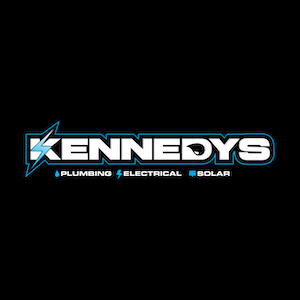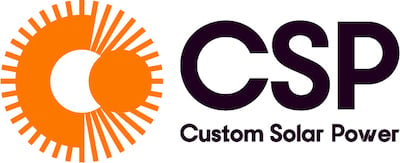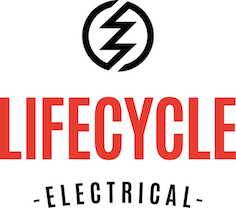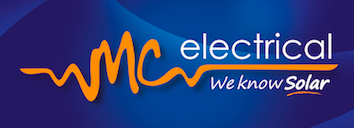

Finn's Tesla EV Chargers Review & Verdict
Finn Peacock has been a Chartered Electrical Engineer since 1998, and is ex-CSIRO
Tesla’s Wall Connector EV charger is good quality and great value at $800 for the hardware. It will charge any brand of recent EV in Australia.
But there’s a big problem. It’s dumb. Unlike most other home EV chargers, it can’t be set up to only charge off excess solar without a Tesla Powerwall.
So, if you want a reliable, cheap, dumb charger for any EV – it’s a great choice. If you want smarts, look elsewhere.
(Tesla car owners can make it smart without buying a Powerwall by using the ChargeHQ app, which controls the charging by talking to the Tesla car, not the Tesla charger – but that has an ongoing monthly subscription fee).
Tesla EV Chargers: Pros & Cons
- Very reasonably priced
- Good quality
- Good support
- One unit can do both single and three phase
- Dumb
- No OCPP support either
About Tesla
Tesla Wall Connector
Tesla is one of the largest manufacturers of EVs in the world. At the start of 2024 they had made more pure electric vehicles than anyone else. BYD now has them beat, but second largest is still huge.
In addition to making EVs and home batteries, Tesla has also manufactured a vast number of home EV chargers, with the latest model being the Tesla Gen 3 Wall Connector.
There are some good reasons to like the Gen 3 Wall Connector…
-
It works with all modern EVs – not just Teslas
-
Its competitive price
-
Enough have been sold to show it’s reliable
-
The 4 year warranty isn’t bad for an EV charger
But you can’t have all that without expecting some sort of trade-off and the Tesla EV charger does have a major drawback…
-
Not able to smart charge
This means it can’t be set to charge an EV solely with surplus energy from rooftop solar. Because this is normally the cheapest way to charge it’s a major drawback. But if you don’t have a problem with this, then the Tesla Gen 3 Wall Connector may be worth your hard earned money. Or, if you're lucky enough to have any, your lazily earned money.
We Have A Write-Up
If you want to read about the Tesla Wall Connector we have a comprehensive blog post on it: Should You Buy A Tesla Wall Connector As Your EV Charger?
I recommend checking it out as it goes into a lot of useful detail and is likely to answer any questions you have. It’s also a pleasure to read – and I’m not just saying that because my boss wrote it.
Full disclosure: It is one of the reasons why I’m saying that.
If you want more general information, you can check out our EV Charging guide. You can also use our EV Charger Comparison Table to check out technical details of the Tesla Wall Connector and compare it to other chargers on the market.
Not Just For Teslas
Those with a healthy level of paranoia may be wondering if the Tesla Wall Connector only works for Tesla vehicles. The good news is there’s nothing to worry about. Provided your EV has a ‘type 2’ AC charging socket you are good to go and every new EV sold in Australia since the start of 2020 is required to have one.
Single-Phase Vs. 3-Phase
The Tesla Wall Connector is suitable for single-phase and 3-phase connections. Unlike many EV chargers, you don't have to pay extra for a 3-phase version. But 3-phase chargers require more work to wire up, so there can be a difference in installation cost.
If your home has single-phase power then you can only connect it as a single-phase EV charger. If you have 3-phase power then you can choose between having it installed as a single-phase or 3-phase charger. Generally, I’d recommend 3-phase version as it can provide nearly 50% more power. But having it installed as a 3-phase charger can increase its installation cost, so the choice comes down to how much you value being able to charge up to 3.6kW faster.
Power Output
The maximum kilowatts (kW) of power the charger can provide depends on the type:
-
Single-phase Tesla Wall Connector = 7.4kW
-
3-phase Tesla Wall Connector = 11kW
While one with a 3-phase connection can provide considerably more power, the current Gen 3 version of the Wall Connector is not impressive compared to some other chargers which can provide 22kW. But because most EVs can only accept 11kW or sometimes less, not being able to provide more than 11kW isn’t a drawback for most EV owners.
Range Per Hour
Tesla has a table on this page that gives how many km of range Tesla vehicles will gain from an hour of charging at 7.4 or 11kW. For example, it says a Tesla Model 3 will gain 75km an hour when charged at 11kW. But Tesla is well known for dishonesty when it comes to the range of their vehicles and the European EV Database says it will actually gain around 67km of range. That’s around 89% of Tesla’s figure.
While the exact amount will depend on the vehicle, generally, you can expect around 40km of range per hour when charging at 7.4kW and around 60km at 11kW.
Cable Length
Not every EV charger comes with a charging cable, but the Tesla Wall Connector has an impressively long one. At 7.3m it’s long enough to potentially let you charge a car that’s behind one parked in front of the charger. This is an important consideration for some homes with two EVs or when EV driving guests arrive.
Operating Temperature
The Tesla Wall Connector’s operating temperature range is from -30 to 50 degrees Celcius. But, according to its operating manual, as it approaches its maximum operating temperature it will start to “derate” and reduce the maximum amount of power it can provide. Depending on conditions, this derating can start at as low as 35 degrees Celcius. Derating is likely to occur sooner with the 11kW 3-phase version than the lower power 7.4kW single-phase version.
Because of this, it’s very important to locate EV chargers in the shade whenever possible. If a sunny location is the only good option, I strongly suggest giving it a shade cover.
While derating at as low as 35 degrees is not good for Australian conditions, it’s not unusual for EV chargers.
Installation Location
The Wall Connector’s Ingress Protection rating is IP55. This means it can resist storm driven rain from all directions and can be installed outside. But as a precaution, you should never intentionally spray it with water. As mentioned, it’s best to install it out of direct sunlight.
It’s Got Guts
If you want to see what the innards of a Tesla Wall Connector look like, you can check out this video where a couple of Americans pull one apart:
EV Home Charger Teardowns E1: Tesla Wall Connector
It’s Not Smart
The Tesla Gen 3 Wall Connector is not capable of smart charging. This means it won’t be able to charge your car using only surplus energy from a rooftop solar system. As this is normally the cheapest way to charge an EV it can be a large drawback. Of course, if you don’t have solar it’s not an issue. But not having solar is an even larger drawback, so you have my sympathies if that’s the case.
There are ways to work around this. With most EVs you can set when they charge and how much power they draw. This can be used to try to maximize the amount of solar power they use. If you don’t mind paying a subscription, you can also use an app such as Charge HQ to help do the same.
But one simple solution I think works well is to just have a large solar system and charge in the middle of the day.
Cost
At the time of writing this in December 2024, the Australian Tesla store is selling the Gen 3 Wall Connector for $800 with $10 delivery. Installation can add considerably to this cost. Note you’re not allowed to install these things yourself without suitable qualifications. Rather than buying one from the Tesla shop, I recommend getting a Wall Connector through your installer so they will be responsible for its warranty. This can make getting problems fixed much easier.
Installing an EV charger isn’t cheap and Tesla says getting Wall Connector installed is likely to knock you back $750 to $1,500. Installations that are straight forward and single-phase will be towards the lower end, while more complex and 3-phase ones will be towards - or sometimes past - the higher end.
Colours Are An Optional Extra
Just like with Tesla cars, if you’re willing to pay extra, you can get one in a colour other than white. For $140 plus $10 delivery you can get different coloured covers for the Wall Connector. The choices are black, dark blue, red, and grey. But if it’s going to be installed in the sun, I recommend sticking with its original off-white cover, as it might help keep it a little cooler.
Warranty
The Wall Connector has a 4-year warranty. This seems pretty lousy, given that Tesla also makes Powerwall batteries that are far more complicated and have 10-year warranties. But most EV chargers only have 2- or 3-year warranties, so compared to the competition, it’s considerably better than average.
Because many Wall Connectors have been produced, if they had serious reliability issues, we probably would have heard about them by now. This makes me optimistic that, in normal household use, they’ll last much longer than 4 years.
Installer Approved
Since 2023, we've been running the SolarQuotes EV Charger Installers' Choice Awards. The Tesla Wall Connector's results for the first two years were:
- 2023: 3rd place in the Money's No Object category, 2nd place Every Dollar Counts category, and 3rd place for Best After Sales Support category.
- 2024: 3rd place in the Money's No Object category, 1st place in the Every Dollar Counts category, and 1st place in the Best After Sales Support category in a tie with the myenergi EV charger.
For the 2025 awards we changed the format and simply asked, "If installing a system on your own house today, what brand's EV charger would you use?" The Tesla Wall Connector took 2nd place.
My Conclusion
Given what else is on the market, the Tesla Gen 3 Wall Connector looks like a good choice – provided its inability to smart charge is not a drawback for you. If you can do without the ability to cheaply charge your EV that way, it’s probably a good choice for a home EV charger.
Tesla has 1 EV charger in our database
Filter by:
Tesla Reviews (43)
Show Most Relevant reviews from All time
- 5 star 42
- 4 star 1
- 3 star 0
- 2 star 0
- 1 star 0
View Timeline
12 November 2024
An incentive was offered by Regen Power for this review. Learn more here.
01 November 2024
An incentive was offered by PSW Energy Perth Solar Warehouse for this review. Learn more here.
22 October 2024
An incentive was offered by Chief Electricians Pty Ltd for this review. Learn more here.
03 April 2025
23 March 2025
This 5 star review was removed at the request of the reviewer
Learn More19 February 2025
An incentive was offered by Regen Power for this review. Learn more here.
03 February 2025
An incentive was offered by Chief Electricians Pty Ltd for this review. Learn more here.
16 January 2025
28 October 2024
25 March 2025






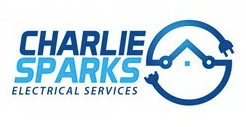




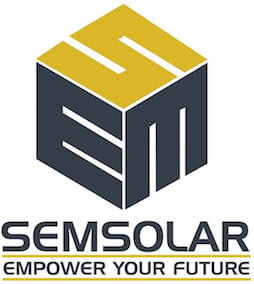

.jpg)

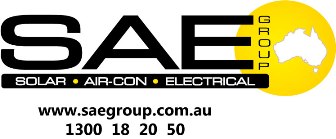
.png)


